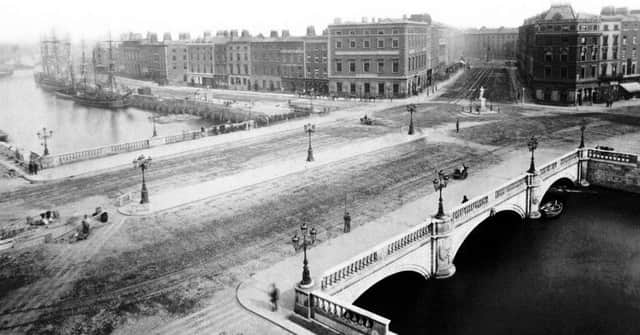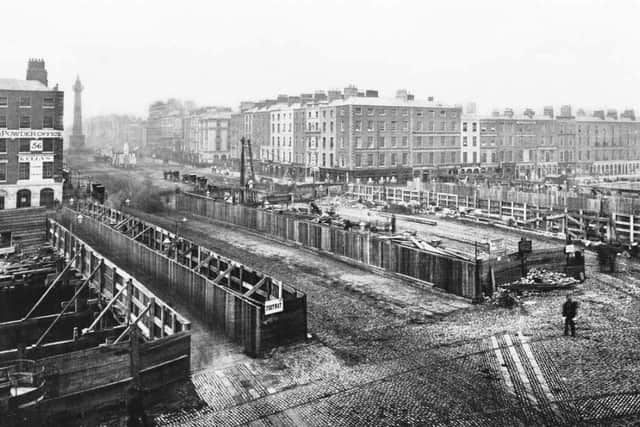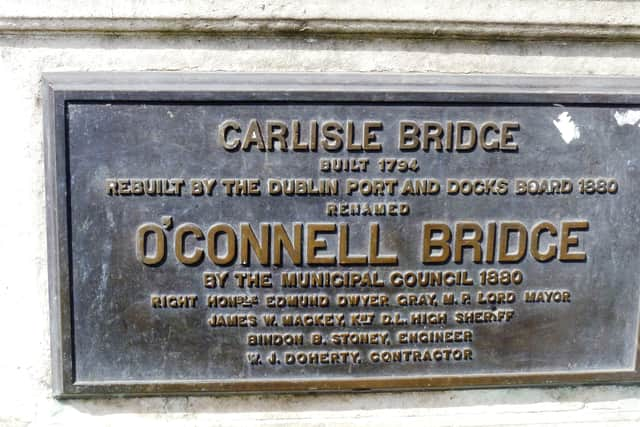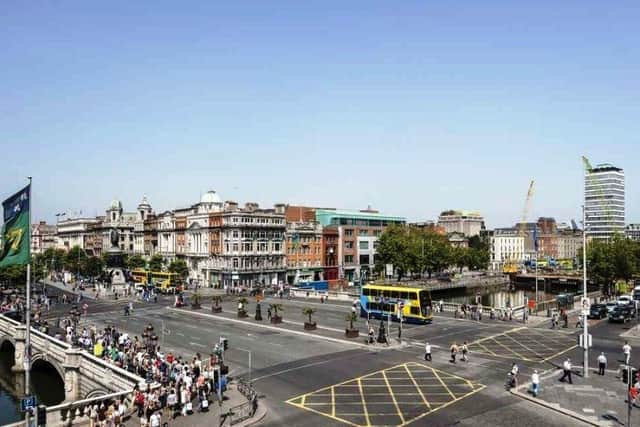William Doherty: the Buncrana man who built O’Connell Bridge


It is referenced in several Irish literary greats and has been photographed millions of times - but one little known fact about Dublin’s famous O’Connell Bridge is that it was built by a Buncrana man.
William J. Doherty constructed the road bridge in the late 1870s for £70,000 which is about £8.5 million in today’s money.
Advertisement
Hide AdAdvertisement
Hide AdIt was officially opened in 1880 and named after the ‘Liberator’, Daniel O’Connell.


William Doherty, who was born in Buncrana in 1834, started his career by serving a four-year pupilage, from 1852 to 1855, as an assistant to James Bayliss on the Lough Swilly reclamation works.
In 1856, he worked on the surveying and laying out of the Londonderry and Lough Swilly Railway and was contracting engineer for the Derry grain dock and wharf.
From the end of 1856 until 1858, he was contractor’s engineer on works at Birkenhead and Liverpool docks and from 1858 to 1862 at Hull Docks.
Advertisement
Hide AdAdvertisement
Hide AdHe returned to Ireland in 1863 and set up in independent practice in Belfast, subsequently opening an office in Dublin, where he carried out several major works, including Grattan Bridge, Butt Bridge and, of course, O’Connell Bridge.


A note in the ‘Irish Builder’ newspaper of July 1880 suggested that Doherty should receive a knighthood on the completion of O’Connell Bridge: “The builder of the new Essex, Carlisle and Swivel Bridges is no mere contractor, for he has shown his capacity in originating methods of construction as well as carrying out the designs of others….For several years…Mr Doherty has been constantly engaged in works of magnitude and of great difficulty, and his practical skill and ready resources have never failed him in any one of his great undertakings. We, therefore, consider that such a man is entitled to credit…and honour, for his works will, for many a long year, reflect honour upon our city.”
Doherty was elected High Sheriff of the City of Dublin in 1893 and was nominated mayor the following year, an appointment which he declined on account of the poor state of his health. He died on February 27, 1898.
A man of literary and antiquarian interests, he published various papers and two books on the antiquities of Tyrconnell and Inishowen.
Advertisement
Hide AdAdvertisement
Hide AdA proposal in 1955 to erect a six metre high, domed, perspex traffic tower over O’Connell Bridge was rejected though it was once permitted to park on the bridge.


The history of the bridge is that of the modern city - rebels hung from gallows here in 1798, O’Connell’s voice boomed out from here, the leaders of 1916 passed this way, shots rang out across it in the War of Independence and the Civil War and the final address of the 1932 Eucharistic Congress was given from the bridge. All told, it seems hardly a bridge and more a destination.
Today, as in times past, and no matter that many other bridges now adorn the River Liffey, O’Connell Bridge is still at the very heart of the city and its people - and thanks, in great measure, to a Buncrana man.